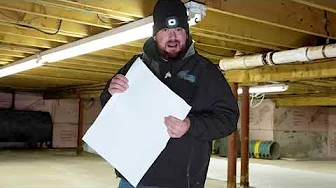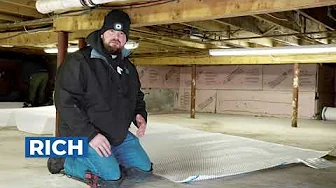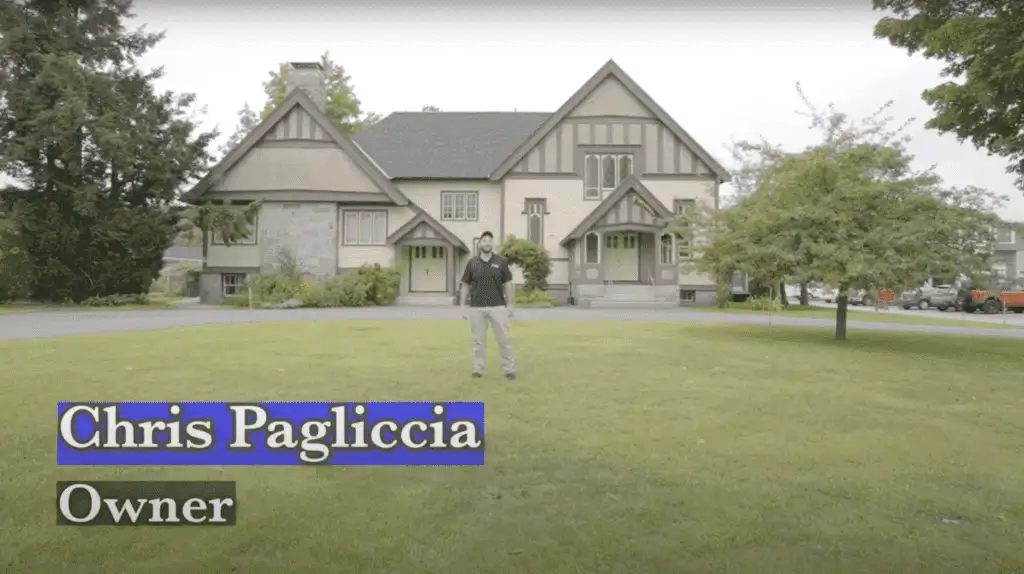Foundation Crack Repair Windham NH
Cracks in your foundation can cause both cosmetic and structural concerns. Over time, even small cracks can grow, leading to water damage, uneven floors, or compromised structural integrity. Homeowners in Windham, NH, often face this challenge due to the area’s soil composition, seasonal changes, and natural settling of homes.
Addressing foundation cracks promptly is essential. It helps protect your property value, prevents costly repairs down the road, and ensures the safety of your home.
Real People - Real Great Results
Crawl Space Video Playlist
The Importance of Foundation Crack Repair
Foundation cracks are like whispers from your home, telling you something isn’t quite right. Some whispers are harmless—a small settling crack that poses no immediate threat—but others can signal the slow, relentless grind of structural decline. The key is knowing when to listen closely.
Cracks aren’t just about appearances. Sure, they might look like a minor cosmetic nuisance, but they can be much more than that. They’re entry points for water, and in a place like Windham, NH, where winters hit hard, water becomes a dangerous ally of damage. When temperatures drop, water inside those cracks freezes, expands, and pushes the walls apart further—a seemingly innocent hairline fracture one season can wake up as a full-blown problem the next.
And it’s not just the freeze-thaw cycle causing trouble. Untreated cracks invite moisture, and moisture invites mold—a silent invader that harms air quality, damages belongings, and creates costly headaches for homeowners. Over time, unchecked cracks can lead to uneven floors, sticky windows, and misaligned doors—small signs of a much bigger problem lurking under the surface.
The bottom line? Paying attention to foundation cracks early saves you a cascade of problems later. A stitch in time really does save nine, especially when your foundation is on the line.
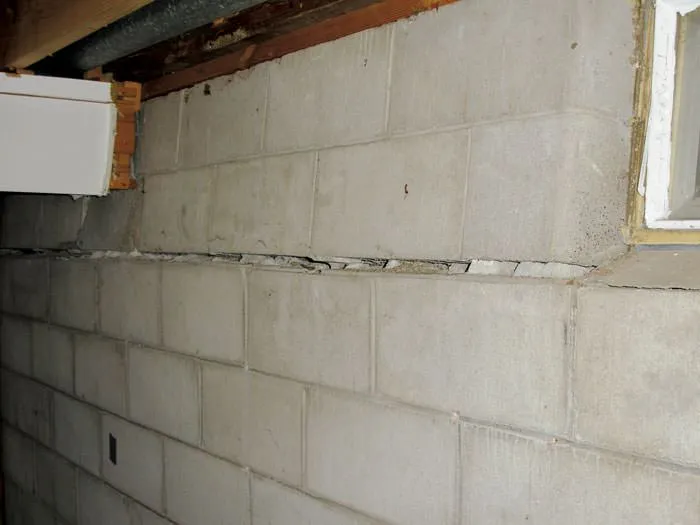
Common Causes of Foundation Cracks
Foundation cracks don’t just appear out of thin air—they’re the result of underlying forces at play, many of which are beyond your control. In Windham, NH, where seasonal shifts and soil conditions create a perfect storm for foundation stress, understanding these causes is key to addressing the issue before it spirals.
- Soil Movement: The soil in New England is no stranger to change. It swells with moisture in the spring and shrinks in drier months, creating an ongoing cycle of expansion and contraction. This push-and-pull dynamic places repeated pressure on your foundation, often leading to cracks. If your home was built on poorly compacted soil to begin with, the problem can show itself even sooner.
- Hydrostatic Pressure: Picture this—heavy rain or melting snow saturates the soil around your home. Water piles up against the foundation, creating hydrostatic pressure. It’s like having an invisible force constantly pressing against your walls, searching for weak spots. Foundations with insufficient drainage are sitting ducks, turning that pressure into visible cracks.
- Natural Settling: No matter how meticulous a construction job is, every house settles over time. This gradual sinking can create minor movements in the foundation. Though hairline cracks from settling are often harmless, they can widen or worsen if ignored, especially in Windham’s freeze-thaw environment.
- Temperature Fluctuations: Winter in New Hampshire is no joke. The freeze-thaw cycle wreaks havoc on concrete foundations. Water seeps into tiny cracks, freezes, expands, and worsens the damage. If your foundation wasn’t properly sealed or reinforced, these small cracks can rapidly escalate in size and severity each winter.
Every crack tells a story. Diagnosing the root cause is a must before jumping into any fixes. Skipping this step is like treating a symptom without addressing the illness—it only delays the inevitable.
Types of Foundation Cracks
Not all cracks are created equal. Understanding the different types can help you gauge the severity of the problem and decide on the right intervention for your foundation.
- Hairline Cracks: These ultra-thin cracks are often the first to appear and are usually a result of minor settling or initial curing of concrete. While they may seem insignificant, they shouldn’t be ignored entirely. Keep an eye on them to ensure they don’t widen over time. What starts as a cosmetic blemish could grow into something more problematic.
- Vertical Cracks: Vertical cracks run straight up and down (or close to it) and are typically the least worrisome. These are most commonly caused by natural settling and don’t usually indicate a serious structural problem. That said, they can still allow water infiltration and should be sealed promptly to avoid moisture issues down the line.
- Diagonal Cracks: When cracks slant at an angle, it’s often because parts of the foundation are settling unevenly. Diagonal cracks suggest that one side of the home is shifting differently than the other, and while not always an immediate red flag, they should be investigated to rule out more serious structural stress. These cracks can also exacerbate water drainage problems if left unaddressed.
- Horizontal Cracks: These are the ones to lose sleep over. Horizontal cracks often signal that outside forces, like soil pressure or hydrostatic pressure, are pushing against your foundation walls. This type of crack is a strong indicator of structural failure and requires immediate professional evaluation. Left untreated, horizontal cracks can compromise the stability of your entire home.
Each crack tells a story—some with happy endings, others requiring more urgent attention. The key is not to underestimate any of them. Even minor cracks can evolve into larger, more expensive issues if ignored for too long.
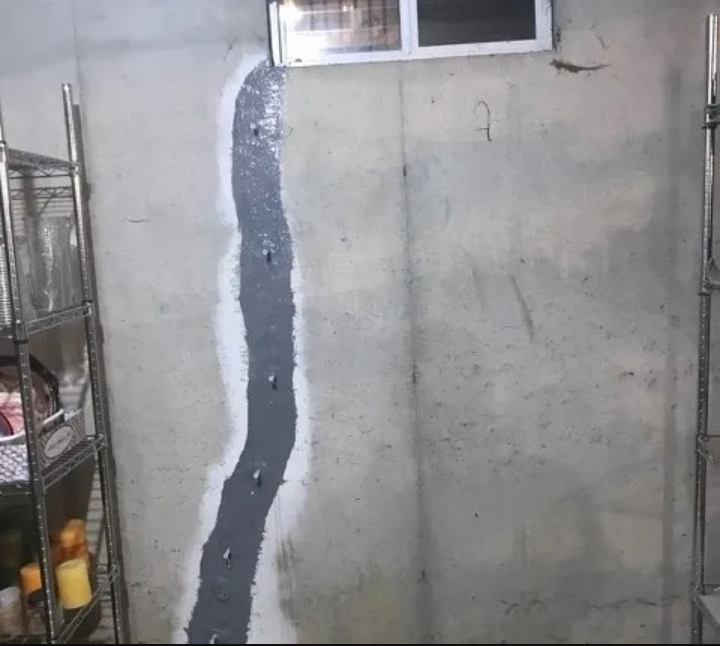
Repair Options for Foundation Cracks
Fixing foundation cracks isn’t a one-size-fits-all process. The right repair approach depends on the type of crack, its cause, and its severity. Here are the most common and effective methods:
- Epoxy Injections: Think of this as glue on steroids. Epoxy is injected directly into the crack to bond and restore the concrete’s structural integrity. This method is best for small but significant cracks, like vertical or diagonal ones, that don’t involve active water seepage but still compromise stability. It won’t help with water issues, but for cosmetic and structural fixes, it’s a solid option. Literally.
- Polyurethane Foam: For cracks that leak—this is your go-to. Polyurethane foam expands once injected, filling gaps and creating a watertight seal. It’s particularly useful in Windham, NH, where wet basements are all too familiar thanks to high groundwater or poor drainage. Bonus: it flexes a bit, so it can handle minor foundation movement over time.
- Carbon Fiber Reinforcement: When the cracks suggest something more sinister—like horizontal splitting caused by hydrostatic pressure—carbon fiber strips are the cavalry. Applied to the wall, they add incredible strength to keep your foundation standing firm. It’s not invasive, and it’s kind of like giving your foundation a suit of armor without gutting your basement.
- Exterior Waterproofing: Sometimes, the main problem isn’t the crack itself but the water creating it. Exterior waterproofing tackles the issue from the outside by applying membranes or coatings to stop water from even touching your foundation. While you’re at it, you might need to rethink soil grading to help with drainage. It’s an investment, but it can save you a world of headaches in the long term.
- Foundation Underpinning:
If the cracks are big enough to make you lose sleep, this is your solution, albeit the nuclear one. Underpinning involves stabilizing the foundation using piers or supports that go deep into stable soil. This is a game-changer for houses experiencing uneven settling. Yes, it’s pricey, but sometimes you can’t negotiate with gravity.
Each repair has its own strengths and limitations. The key is addressing the source of the problem first, not just covering up the symptoms. Cutting corners here is a gamble, and with New England’s unpredictable weather, it’s one you don’t want to take.
Preventing Future Foundation Issues
After addressing existing foundation cracks, the goal is to keep new ones from forming. Prevention isn’t about overhauling your lifestyle—it’s about simple, consistent actions that minimize stress on your foundation. For homeowners in Windham, NH, where seasonal extremes and soil composition play a major role in foundation issues, proactive measures can go a long way.
- Ensure Proper Drainage: Water is a foundation’s worst enemy. Make sure gutters are clear and downspouts direct runoff at least 5–10 feet away from your foundation. Pooling water increases hydrostatic pressure, which can lead to new cracks. If your yard has poor drainage, consider installing French drains or regrading the landscaping.
- Grade the Soil: Walk around your home after heavy rain. If water tends to sit close to the foundation, the soil slope is likely working against you. Use fill dirt to create a gentle slope (at least 6 inches over the first 10 feet) that pushes rainwater away from your house instead of letting it soak in around the base.
- Seal Basement Walls: Don’t wait for moisture to become a problem. Applying a quality waterproof sealant to interior basement walls creates an extra layer of defense, especially against Windham’s freeze-thaw cycles. This step is quick, cost-effective, and a great long-term investment.
- Control Moisture Levels Inside: A damp basement often signals unchecked humidity, which can weaken foundation materials over time. Use a dehumidifier during humid months and keep indoor moisture levels between 30–50%. Not only does this protect your home’s structure, but it also keeps issues like mold or mildew at bay.
Like most things in home maintenance, preventing future foundation problems is more about persistence than perfection. A little attention today means fewer headaches—and expenses—tomorrow.
Why Timely Repairs Matter
When it comes to foundation cracks, delay is the enemy. A crack that looks harmless today can grow into a costly nightmare tomorrow. Water infiltration, structural weakening, and even pest intrusion are all risks that intensify the longer a crack is left unattended. In Windham, NH, where freezing winters and spring thaws work in tandem to exacerbate foundation damage, waiting is rarely an option.
Timely repairs not only minimize the direct cost of fixing the issue but also prevent collateral damage. A sealed crack can sidestep water seepage that might lead to mold remediation. Reinforced walls can avert uneven floors, stuck doors, or even unsafe living conditions. It’s not just about saving money—it’s about safeguarding your space and peace of mind.
For homeowners in Windham, there’s also the matter of resale value. Potential buyers notice foundation issues, and untreated cracks can turn into bargaining chips—or outright deal breakers. A well-maintained foundation signals that the home has been cared for, leaving fewer concerns for the next owner. Ultimately, prompt repairs are about control. You address the problem on your terms, rather than at the mercy of worsening conditions or emergency repairs that can spiral out of control. In short: spot the crack, fix the crack, and rest easy.
When To Call a Professional in Windham NH
Not all cracks are created equal, and knowing when to bring in a professional can save you from costly headaches down the road. Sure, some hairline cracks might just be a cosmetic quirk, but when do they become a red flag? Here’s the deal: if any of the following apply, it’s time to stop Googling and start dialing.
- Cracks wider than 1/8 inch: Grab a ruler. If it’s thicker than two stacked quarters, it’s beyond DIY territory. Larger cracks could mean significant structural stress or shifting, which is not something to shrug off.
- Water seepage: Notice dampness, puddles, or even just the persistent smell of mildew in your basement? That’s not just annoying—it’s a sign that cracks are letting moisture sneak in. Left unchecked, it could invite mold or even structural rot.
- Horizontal or diagonal cracks: Of all crack types, these are the ones that practically scream “call an expert.” They often signal pressure pushing against foundation walls or uneven settling, and both scenarios could jeopardize your home’s stability.
- Uneven floors and sticky doors/windows: If your floors feel like a funhouse or your doors and windows are catching for no apparent reason, your foundation may be shifting. That’s not the kind of problem you can patch over with a weekend project.

Here’s the good news: calling a professional doesn’t mean committing to immediate excavation or heavy-duty repairs. Experts can assess the cracks, identify their causes, and guide you toward the most practical and cost-effective solution. In Windham, NH, where freeze-thaw cycles and finicky soils can wreak havoc, a trained eye can make all the difference. Why guess when you can know?
Conclusion
Foundation cracks are an inevitability for many homes in Windham, NH, but they don’t have to spiral into costly catastrophes. Whether the culprit is New England’s fickle soil, relentless freeze-thaw cycles, or natural settling, identifying and addressing cracks early is the key to minimizing damage. This isn’t just about preserving property value—it’s about ensuring your home remains structurally sound and safe for years to come.
The good news? Solutions are as varied as the cracks themselves, ranging from simple epoxy injections to more robust options like carbon fiber reinforcement or foundation underpinning. The sooner you assess and act, the less chance small annoyances evolve into structural headaches. Take the time to maintain your foundation today, and you’ll thank yourself when New Hampshire’s toughest weather inevitably rolls through again.
Reviews from Happy Customers
Our top priority is customer satisfaction, and we work closely with clients to understand their unique needs and goals.




